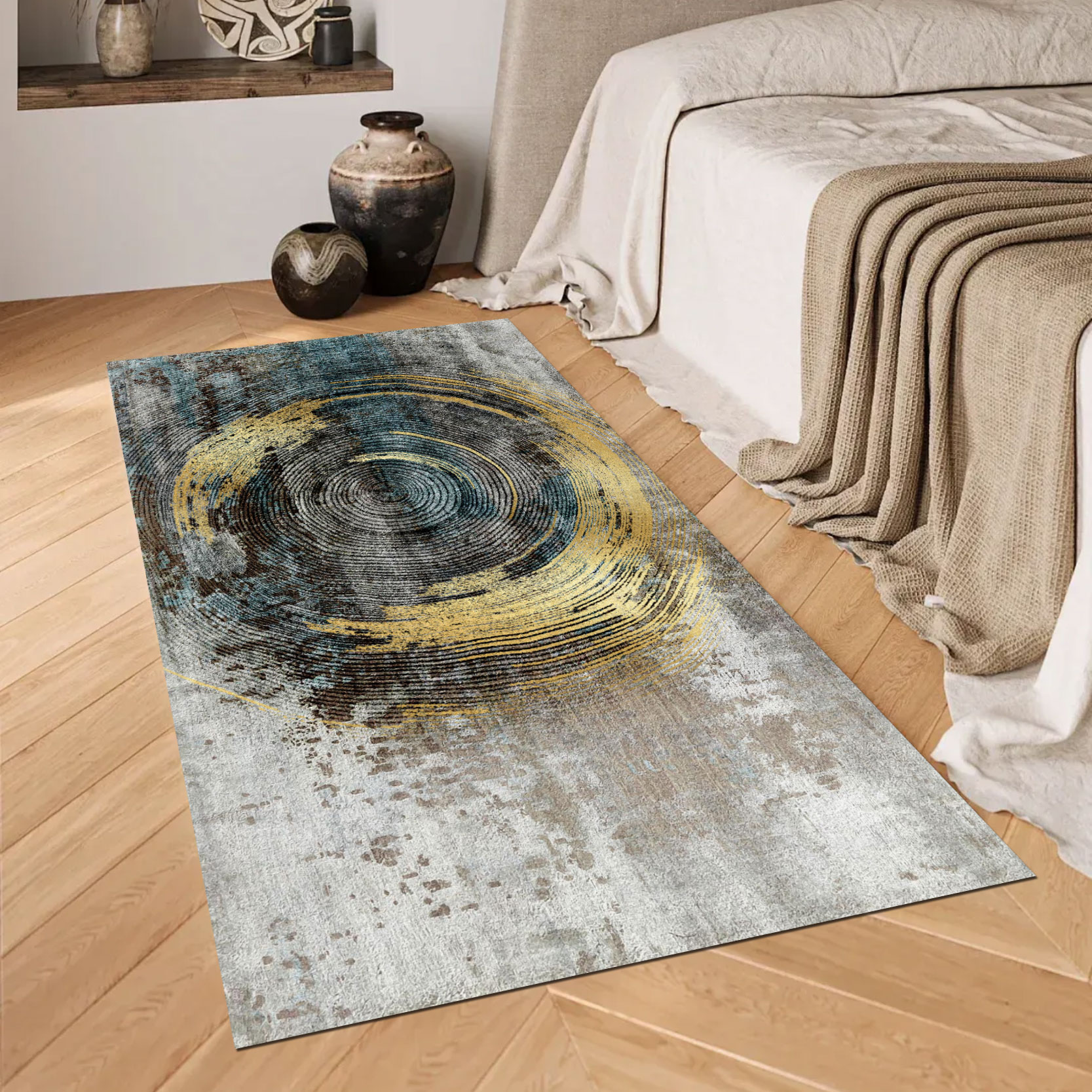 2025.07.09
2025.07.09
 Industry News
Industry News
Area rugs are far more than simple floor coverings; they are foundational elements in interior design, offering a unique blend of aesthetic appeal, comfort, and practical benefits. From defining zones within open-plan layouts to adding warmth and texture, a well-chosen area rug can transform a space, reflecting personal style and enhancing the overall ambiance. Understanding the diverse world of area rugs involves appreciating their materials, construction, design principles, and strategic placement.
The material composition of an area rug is paramount, dictating its durability, feel, appearance, and maintenance requirements.
Natural Fibers:
Wool: Renowned for its exceptional durability, softness, and natural stain resistance, wool rugs are a timeless choice. They offer excellent insulation and retain their pile exceptionally well. Common types include New Zealand wool, known for its whiteness and softness, and various blends.
Cotton: Lighter and more casual than wool, cotton rugs are often washable, making them ideal for high-traffic areas or homes with children and pets. They come in various weaves, including flat-weave kilims and dhurries.
Jute, Sisal, and Seagrass: These plant-based fibers offer a natural, textural, and often rustic aesthetic. They are highly durable and sustainable but can be coarser underfoot and may not be as stain-resistant as wool. Jute is generally softer than sisal.
Silk: Luxurious and incredibly soft, silk rugs are prized for their sheen and intricate detail. They are, however, less durable and more expensive, typically reserved for low-traffic, formal areas.
Synthetic Fibers:
Nylon: Highly durable, stain-resistant, and resilient, nylon is a popular choice for high-traffic areas. It holds color well and is relatively affordable.
Polypropylene (Olefin): This fiber is excellent for outdoor use and high-moisture areas due to its water, mold, and fade resistance. It's also very affordable but may not have the same luxurious feel as natural fibers.
Polyester: Known for its softness and vibrant color retention, polyester is often made from recycled materials. While comfortable, it may not be as resilient to crushing as nylon or wool.
Viscose (Rayon): Often used to mimic silk, viscose offers a similar sheen at a lower cost. However, it is less durable and highly susceptible to water damage and matting.
The method by which an area rug is constructed significantly impacts its quality, durability, and texture.
Hand-Knotted: This labor-intensive method involves individual knots tied by hand onto a warp and weft foundation. Hand-knotted rugs are the most durable and expensive, often becoming heirloom pieces. The knot count (knots per square inch) is a key indicator of quality and intricacy.
Hand-Tufted: In this process, yarn is punched through a fabric backing using a tufting gun, and then a secondary backing is applied with latex glue to secure the fibers. While still handcrafted, they are less durable and more affordable than hand-knotted rugs, and shedding can be a characteristic.
Flat-Weave (Kilim, Dhurrie, Braided): These rugs are created by interweaving warp and weft threads, resulting in a flat, reversible, and often lightweight rug without a pile. They are durable, easy to clean, and offer a distinct textural aesthetic.
Power-Loomed (Machine-Made): Produced rapidly by machines, these rugs offer affordability and consistency in design. They can mimic various styles but generally lack the longevity and unique character of handcrafted pieces.
Shag: Characterized by a long, loose pile, shag rugs offer a luxurious, plush feel and excellent sound absorption. They can be made from various materials, both natural and synthetic.

The strategic use of area rugs can dramatically influence the perception and functionality of a space.
Defining Zones: In open-concept living, a rug can effectively delineate distinct areas, such as a living room seating arrangement or a dining space, without the need for physical barriers.
Anchoring Furniture: A rug should be large enough to at least have the front two legs of all main furniture pieces (sofas, chairs) resting on it. Ideally, all furniture should be entirely on the rug for a cohesive and grounded look in larger rooms.
Adding Warmth and Comfort: Rugs provide a soft landing underfoot, reducing fatigue and adding a layer of insulation, especially on hard flooring. They also absorb sound, improving acoustics.
Injecting Color, Pattern, and Texture: A rug can be a powerful design statement, introducing a bold pop of color, an intricate pattern, or a subtle textural element that complements or contrasts with existing decor.
Protecting Flooring: Rugs shield underlying hard floors from scratches, dents, and wear, extending their lifespan.
Proportion and Scale: The size of the rug is crucial. A rug that is too small can make a room feel disjointed. Standard sizing guidelines exist for living rooms, dining rooms, and bedrooms, but custom sizing is often available.
Traffic Considerations: For high-traffic areas like hallways or entryways, opt for durable materials like wool or nylon and patterns that can camouflage wear. For low-traffic zones, softer, more delicate materials can be considered.
Proper care is essential to prolong the life and beauty of an area rug.
Regular Vacuuming: Frequent vacuuming with the appropriate setting for the rug's pile height helps remove dirt and prevent it from settling deep into the fibers.
Spot Cleaning: Address spills immediately by blotting (not rubbing) with a clean cloth and a mild cleaning solution appropriate for the rug material.
Professional Cleaning: Depending on traffic and material, professional cleaning every 12-18 months is recommended to remove embedded dirt and refresh the rug's appearance.
Rotate Regularly: Rotating your rug periodically helps ensure even wear and exposure to light.
In conclusion, area rugs are indispensable tools in interior design, offering a versatile means to enhance aesthetics, comfort, and functionality. By carefully considering the material, construction, size, and design, one can select an area rug that not only complements a space but also elevates it, creating an environment that is both beautiful and inviting.